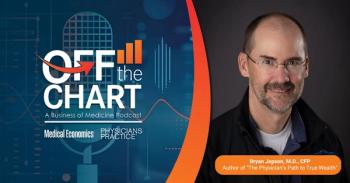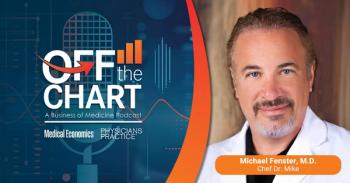
Other Ways to Treat Patients with Anxiety, Emphysema, Chronic Pain
Breathing methods can equip patients to handle stress without reaching for pills.
One of the most practical, useful, and constantly overlooked therapeutic modalities we can offer patients is the application of mindful breathing techniques, the technical term for which is pranayama. Plentiful data exists in scientific literature attesting to clinical benefits as a result of performing these methods.
Pranayama actually is a general “umbrella” term encompassing a complex range of different breathing techniques. Examples include slow, deep breathing (slowing the respiratory rate to under six breaths per minute); holding the breath after inhalation to plateau pressure; rapid burst of large tidal volume inhalation and exhalation (aka fire breathing); alternate nostril breathing; and abdominal (diaphragmatic) breathing.
Such methods are among the few available to humans that can significantly affect physiologic states immediately, and which can reliably lead to clinical goals in a relatively short amount of time.
A simple Google Scholar or PubMed search can reveal the actual trials evaluating clinical efficacy. There are RCT’s published in peer-reviewed journals such as Lancet, Journal of Alternative and Complementary Medicine, and Lung India.
Since there is no financial profit in studying pranayama, we must rely on the work of courageous researchers interested in potential clinical benefits. So for any administrators or health-system scholars reading this, let me just say that while pranayama isn’t included in standard of care, it should be since the methods are safe and efficacious.
Any clinician can attest to the epidemic of anxiety and depression among patients who have high rates of medical utilization in this country. Physicians routinely prescribe dangerous benzodiazepines, which like alcohol, merely increase GABAergic and consequently glutaminergic neuronal activity in the brain, leading to dependence and often abuse. Cessation of benzodiazepine medication can lead to withdrawal seizures due to unopposed glutaminergic activity.
In addition to making use of counseling and referral to psychiatry, physicians trained in pranayama can make use of its techniques to bring about immediate anxiolytic effects. These effects are thought to be mediated by parasympathetic (sympatholytic) mechanisms. In fact, it is natural to recommend slow, deep breathing to anxious patients - we all do it anyway.
Pranayama is a systematic methodology which can be taught to patients, especially high-functioning patients with significant anxiety. Further, the breathing methods equip patients to handle stress without the reflex action of reaching for pills. One can only wonder if the use of pranayama may have been beneficial to the many people (including Heath Ledger and Michael Jackson) who died from overuse of anxiolytic and narcotic medication.
Any respiratory physiologist can attest to the influence breathing has on overall body physiology. Changes in tidal volume and respiratory rate as a result of pranayama cause the following effects (possibly due to vagal mechanisms): lowering of heart rate, lowering of systemic blood pressure, changes in patterns of cerebral vasodilation and vasoconstriction, electroencephalographically measurable changes in brain electrical activity, sympatholytic activity, changes in peripheral perfusion, and increased pulmonary vasodilation.
However, pranayama should only be taught by a properly trained physician. I have witnessed migraines and hyperventilation induced by improperly practiced breathing methods. So while the methods in general are safe, they must be properly performed.
I have also used pranayama to help patients with emphysema. Chronic lung disease patients are taught diaphragmatic breathing in pulmonary rehabilitation programs, and these methods have shown demonstrable benefits. For chronic heart disease patients, pranayama has also been shown to be useful. Dr. Dean Ornish, the founder and president of the Preventive Medicine Research Institute, uses pranayama in his therapeutic program, which has been shown to significantly improve myocardial performance. Also, the methods are useful for chronic pain patients.
System designers and administrators must be aware of the narcotic medication and chronic pain epidemics sweeping this country. I include pranayama methods for all my chronic pain patients, all of whom feel the beneficial effects within minutes.
As physicians, we must be teachers. We must teach patients how to eat, how to maintain good posture (poor posture is an essential etiologic factor in chronic low-back pain and pain related to lumbar discopathy), and how to breathe. This should be part of basic, cost-effective primary care. You can prove this to yourself. Any human can feel the effects of the healthy lifestyle immediately upon its implementation. Pranayama is an important component of the healthy lifestyle and has been practiced in India and China for thousands of years.
For more on Dushyant Viswanathan and our other Practice Notes bloggers,
Newsletter
Optimize your practice with the Physicians Practice newsletter, offering management pearls, leadership tips, and business strategies tailored for practice administrators and physicians of any specialty.












